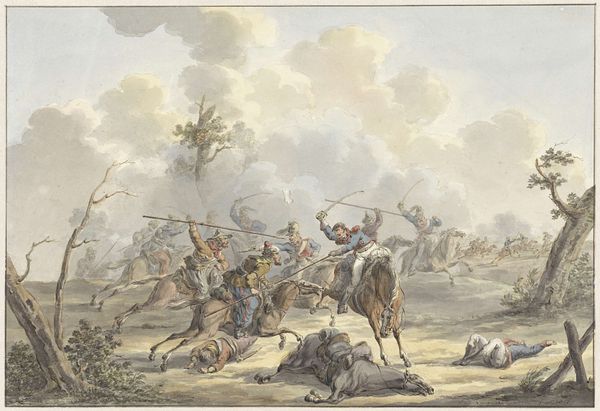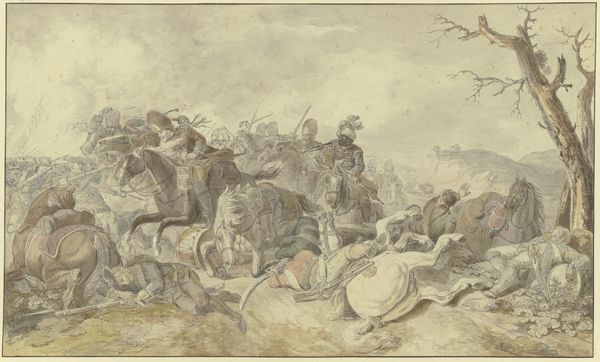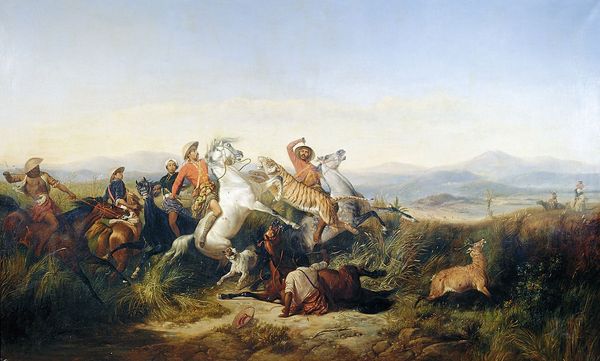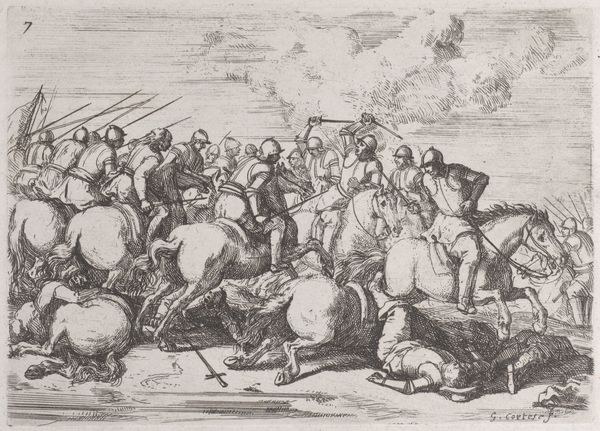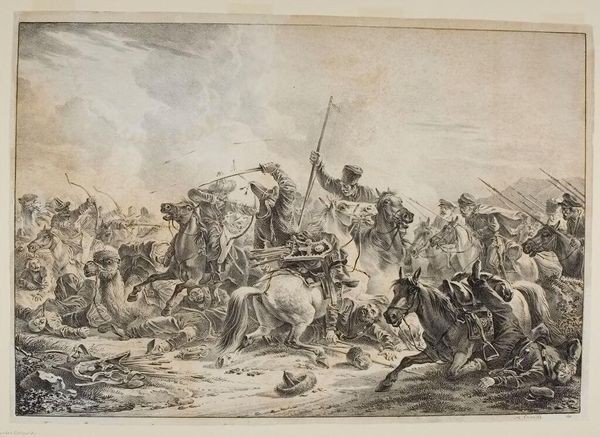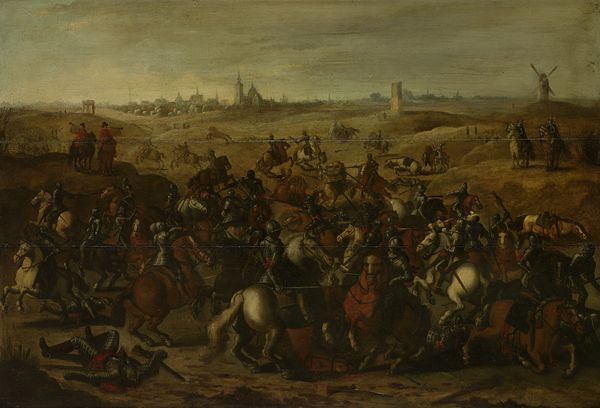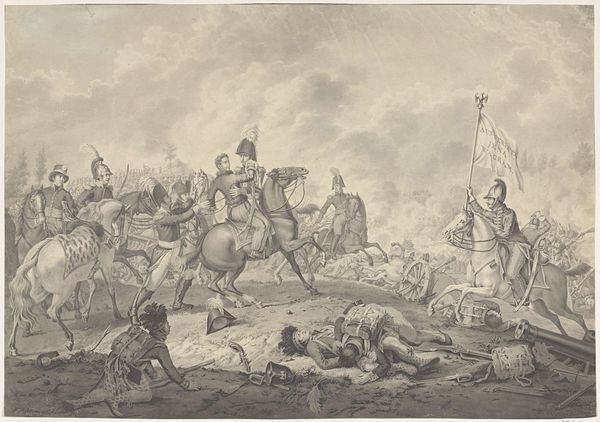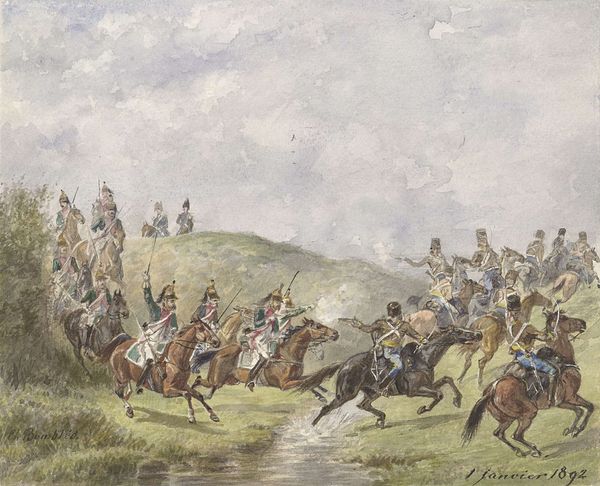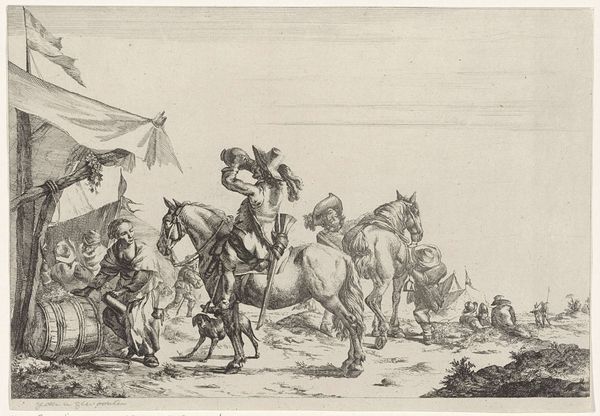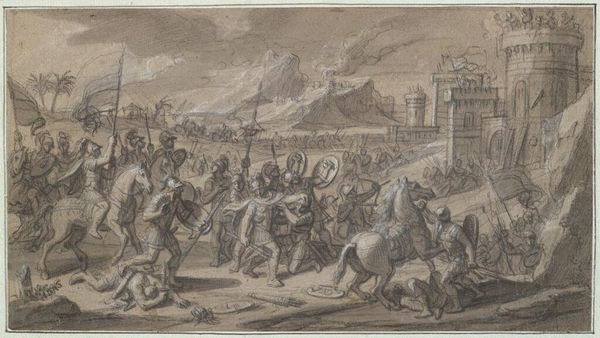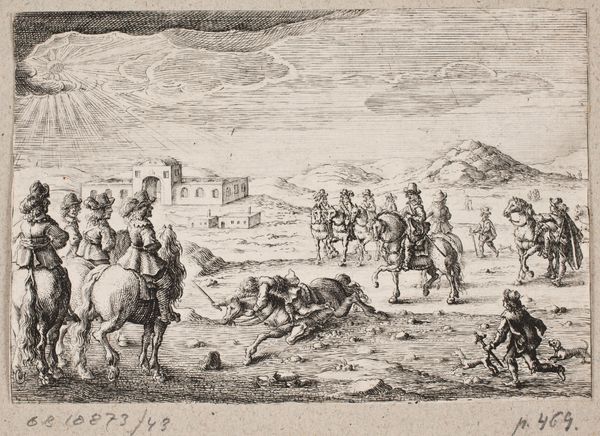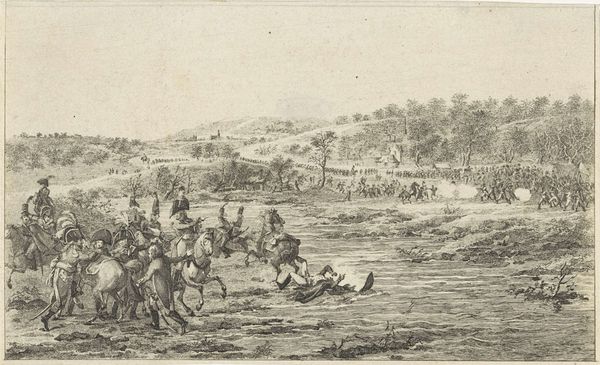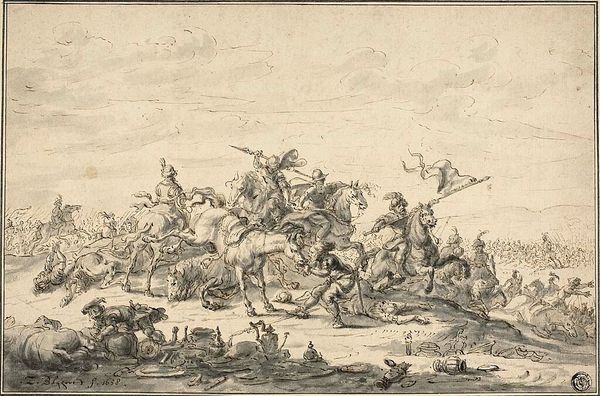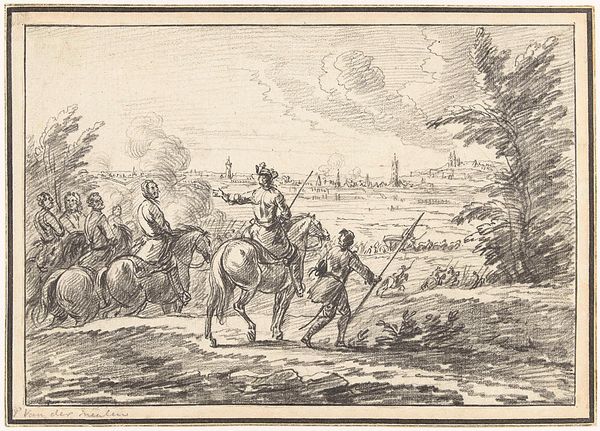
painting, watercolor
#
baroque
#
painting
#
landscape
#
oil painting
#
watercolor
#
coloured pencil
#
genre-painting
#
history-painting
#
mixed medium
#
mixed media
#
watercolor
Dimensions: height 14 cm, width 16.5 cm, depth 2.5 cm
Copyright: Rijks Museum: Open Domain
Curator: Bartholomäus Dietterlin's "Cavalry Skirmish in a Mountainous Landscape," painted sometime between 1636 and 1640, depicts exactly what it says on the tin—a chaotic clash amidst rugged terrain. It’s a mixed medium piece, incorporating watercolor, colored pencil, and oil paint to achieve its layered effects. Editor: My first thought is: overwhelming. A swarm of figures and horses churning away—almost cartoonish with the puffs of smoke and bursts of bright colors. There is a palpable feeling of panicked urgency. Curator: The figures do have an animated quality, don't they? It’s Baroque but rendered with an almost miniature sensibility. This was a period saturated with grand narratives of power and conflict. Genre and history painting were coming into their own. It really puts into perspective the kind of visual spectacle they craved. Editor: I see what you mean about spectacle. Still, I get this sense of detachment, too. It’s as if we’re peering down at these combatants from a great distance, reducing their struggles to this miniature theatre. I'm oddly comforted by its scale in a morbid kind of way. Curator: Perhaps that’s a commentary on the era’s detachment as well? From a distance, war can seem…romantic, but up close, the reality is obviously brutally different. Dietterlin manages to convey the theatricality of the Baroque period while still hinting at the inherent brutality of armed conflict. The juxtaposition is quite unsettling if you consider the actual impact the many wars and skirmishes had during this period. Editor: Right, I find myself searching for individual stories amidst the mayhem, wanting to know something—anything—about these tiny figures and their tiny dramas. Like who decided to wear bright orange to the skirmish. It doesn't feel historically sensitive—it feels raw in a strangely palatable form. It pulls you in. Curator: Indeed. There is a magnetism about it that goes far beyond its scale. I’m often surprised by how immediate history can become through art. This skirmish from centuries ago suddenly feels a lot closer and infinitely complex. Editor: I think I am still processing that orange sash… Anyway, for all the historical context, this image resonates with a visceral intensity that almost transcends time. Curator: Agreed. It makes one pause, doesn’t it? Reflecting not just on history, but on the present and how these narratives keep resurfacing in our own ways of processing events today.
Comments
No comments
Be the first to comment and join the conversation on the ultimate creative platform.
